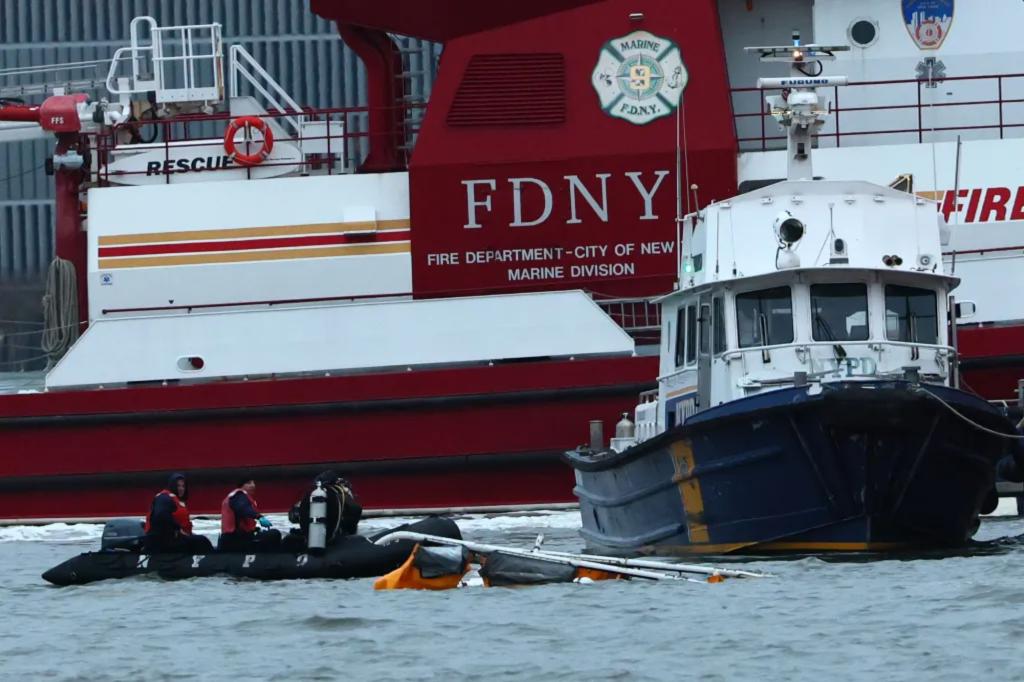Helicopter Safety Under Scrutiny After Hudson River Tragedy
A fatal helicopter crash into the Hudson River has reignited concerns about aviation safety and regulatory oversight, prompting the operator to suspend all flights indefinitely. The incident, involving a once-trusted tour company, occurred last Tuesday during a routine sightseeing trip with five passengers aboard. Preliminary investigations suggest mechanical failure as the likely cause, though officials stress the inquiry remains ongoing.
The Ill-Fated Flight and Its Aftermath
Eyewitnesses described the aircraft sputtering before plunging 1,200 feet into the icy waters near Liberty Island. Despite rapid Coast Guard response, only two survivors were recovered. The tragedy marks the third accident for the operator in five years—a statistic that has aviation experts questioning maintenance protocols.
“When you see multiple incidents within a short timeframe, it suggests systemic issues rather than isolated mishaps,” says Dr. Elena Rodriguez, an aerospace safety researcher at MIT. Her 2022 study revealed that 43% of commercial helicopter accidents stem from maintenance lapses, compared to just 19% for fixed-wing aircraft.
Regulatory Gaps in Helicopter Operations
The Federal Aviation Administration (FAA) currently imposes less stringent requirements on helicopter operators compared to airlines. Key differences include:
- No mandatory black box recorders for aircraft under 7,000 pounds
- More flexible maintenance schedules for non-scheduled operators
- Fewer required rest hours for pilots conducting short-haul flights
Former NTSB investigator Mark Tolbert notes: “The regulatory framework hasn’t kept pace with the exponential growth of urban air tours. We’re applying 1990s standards to 2020s traffic volumes.” Urban helicopter flights have increased 217% since 2015 according to FAA data.
Operator History Raises Red Flags
Public records reveal the company involved had received six FAA warnings about maintenance documentation in the past 18 months. While none were classified as “critical,” safety advocates argue the pattern should have triggered deeper scrutiny.
The operator’s safety record shows:
- 2019: Hard landing with minor injuries (NTSB blamed pilot error)
- 2021: Engine failure during takeoff (attributed to fuel contamination)
- 2023: Emergency water landing (cause still under investigation)
“There’s a dangerous presumption that helicopters are inherently safe for short flights,” cautions pilot union representative David Kwong. “The reality is they face unique stresses—especially in dense urban environments with unpredictable wind patterns.”
Industry-Wide Implications for Passenger Safety
The accident has spurred calls for reforming Part 135 regulations governing commercial helicopter operations. Proposed changes include enhanced pilot training for water landings and mandatory terrain awareness systems—technologies already required for most airline operations.
Technological Solutions vs. Cost Concerns
While safety advocates push for modernization, operators warn that sweeping changes could price many companies out of business. Installing crash-resistant flight recorders alone costs $25,000-$50,000 per aircraft according to Helicopter Association International estimates.
“We absolutely need to improve safety, but it has to be done in a way that doesn’t collapse an entire industry,” argues tourism operator Jessica Lin. Her New York-based company has voluntarily adopted many proposed safety measures, but notes smaller operators may struggle with the costs.
The Human Factor in Aviation Safety
Investigators are examining whether pilot fatigue contributed to the crash. Unlike airline pilots, tour operators often work extended hours during peak seasons without mandatory rest periods. The NTSB has documented 14 fatigue-related helicopter accidents since 2018.
Key findings from pilot interviews:
- 62% reported flying while fatigued during peak season
- 38% admitted skipping pre-flight checks when behind schedule
- 29% said they felt pressured to fly in marginal weather
Path Forward: Balancing Safety and Accessibility
As the investigation continues, aviation authorities face mounting pressure to implement reforms without stifling an industry that generates $1.2 billion annually. Possible compromise measures include phased implementation of new technologies and targeted subsidies for safety upgrades.
The FAA has announced a 90-day review of urban air tour operations, while several major operators have preemptively grounded their fleets. For now, the iconic sight of helicopters buzzing past Manhattan’s skyline remains absent—a sobering reminder of the stakes involved.
Safety advocates urge travelers to research operators’ accident histories and maintenance policies before booking flights. As the industry stands at a crossroads, this tragedy may prove the catalyst for long-overdue changes in helicopter safety standards.
See more Update My News



